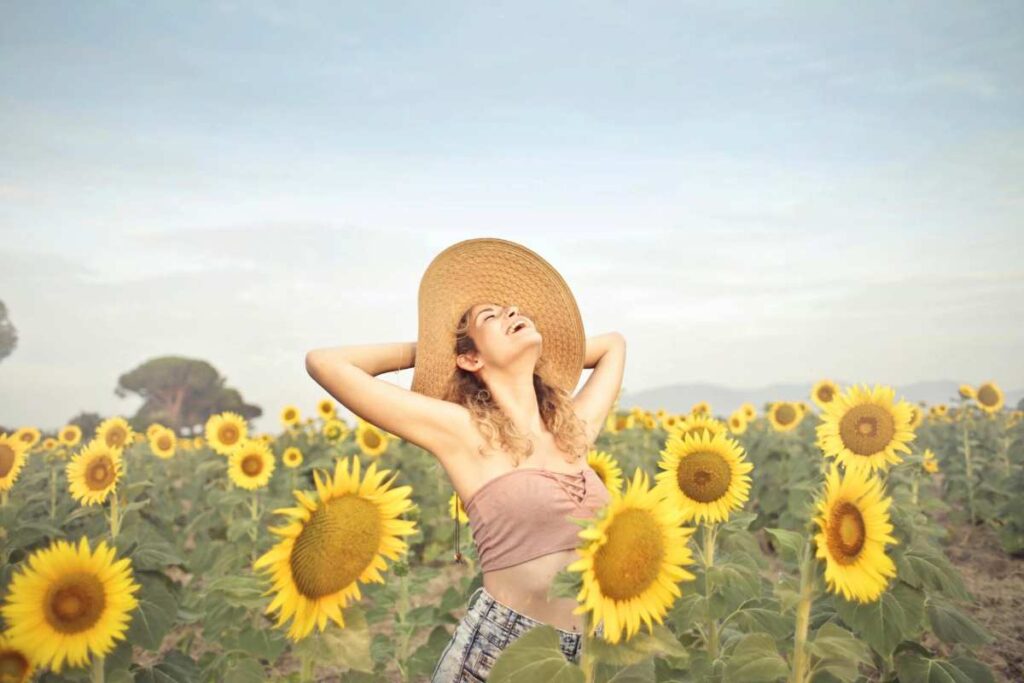Anxiety is part of life. It’s passed down from our ancestors for the purpose of survival.
Instead of fighting our anxiety, we can use embodied and creative ways to listen to what our anxiety is trying to tell us without letting it overwhelm us. Here are some creative, hands-on ways to manage anxiety that work with your body and nervous system— through insights from Polyvagal Theory.
Polyvagal Theory, developed by Dr. Stephen Porges, explains how our autonomic nervous system responds to stress and safety. It shows that our nervous system shifts between three states:
- Ventral Vagal (Safe & Social) – Calm, connected, and regulated.
- Sympathetic (Fight or Flight) – Alert, anxious, or agitated.
- Dorsal Vagal (Shutdown) – Withdrawn, numb, or frozen.
Creative techniques can help shift your nervous system from anxious (sympathetic) or shut-down (dorsal vagal) states into a more regulated ventral vagal state, promoting calm, connection, and clarity.
Here are some creative strategies to try:
1. Movement as Medicine
Your body often feels tension before your mind recognizes it. Activities like yoga, dancing, or mindful walking engage your nervous system and encourage ventral vagal regulation. Even a few minutes of free movement to your favorite music can release stored stress and bring you back to safety.
2. Art and Expressive Journaling
Creative expression allows you to release emotions that keep your nervous system in hyper-alert mode. Whether you sketch, paint, or write freely, the act of creating signals to your brain that you are safe, giving your ventral vagal system a chance to engage. Through journaling and art-making, you externalize overwhelming sensations from your body onto the page. By seeing and naming what was once “invisible,” you gain greater understanding of your anxiety while feeling more in control and empowered.
3. Music Therapy for Mood Regulation
Music directly affects our nervous system and the emotional part of our brain. Listening to calming music, drumming, humming, or singing can stimulate the ventral vagal pathways, slowing your heart rate, and activating feelings of safety and connection.
4. Grounding Through Sensory Awareness
When anxiety spikes, grounding through your senses helps shift your nervous system:
- Touch: Placing your hands on your heart area, cheeks, neck, or forehead while exhaling deeply can signal your nervous system that you are safe.
- Sight: Focus on the colors or natural scenery in your surroundings can help you orient in the here and now.
- Smell: Use calming scents like lavender or step into nature and inhale deeply.
- Sound: Listen to ambient or soothing sounds. Turn on calming music or calming nature sounds.
- Taste: Putting something sour in your mouth—or even imagining the taste of a lemon—can trick your brain into feeling calmer. This works because salivation naturally occurs when we are in a safe, restorative state. You can also try savoring a mindful sip or bite to help signal safety to your nervous system
These sensory exercises signal safety to your nervous system, gently nudging it toward ventral vagal regulation.
5. Mindful Visualization and Storytelling
Visualization and storytelling can calm the nervous system. Imagine a calm place or create a story where anxiety becomes a guide rather than an enemy. This narrative shift signals your brain that you are safe and encourages ventral vagal activation.
6. Play and Humor
Laughter and playful movement engage social engagement circuits in the ventral vagal system, helping reduce sympathetic overdrive. Watch something funny, play a game, or do something silly—these simple acts help your body remember safety and connection.
7. Somatic Techniques
Anxiety often shows up physically first. Techniques like deep diaphragmatic breathing, progressive muscle relaxation, or tapping (EFT) help release tension and regulate your nervous system. Gentle rocking or stretching can also signal safety and bring your system toward ventral vagal balance.
8. Create a Personal Anxiety Toolkit
Combine your favorite creative strategies into a toolkit: a journal, art supplies, grounding objects, calming music, or affirmations. Having a go-to “creative toolbox” not only helps manage anxiety but also reinforces a sense of safety and self-regulation through the ventral vagal system.
Closing Thoughts
Managing anxiety isn’t just about controlling thoughts—it’s about working with your nervous system. Polyvagal-informed, creative practices allow you to engage your body, mind, and senses in ways that promote safety, regulation, and connection.
Anxiety is a signal, not a threat. By approaching it with curiosity, creativity, and Polyvagal awareness, you can transform anxious energy into a pathway for growth, resilience, and self-awareness.







